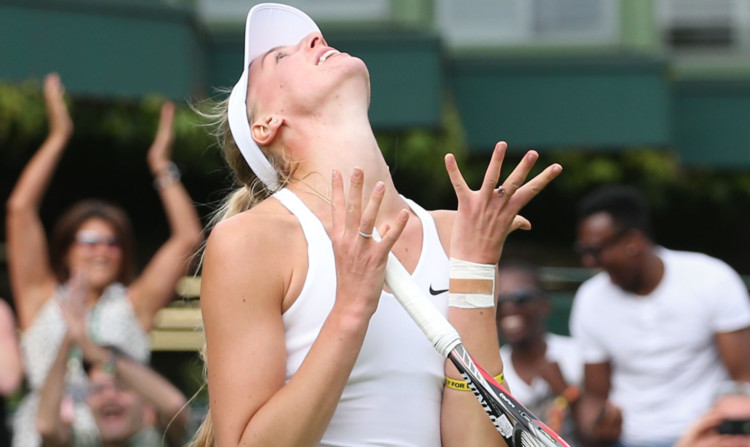
It was nice to watch Naomi Broady win her First Round tie.
I’m sure her family enjoyed the victory, having sold their home some years ago to finance her tennis.
Whether that was the right decision is another matter. When parents do something like that, how much pressure does it put on the child?
Sadly, there are many cases of parents making huge sacrifices, only for the kids to find it all too much of a burden.
Obviously, parents have a huge role to play in the development of young players. Only the family members know if the sacrifice is worth it.
On this theme, it’s interesting that there were six American collegiate champions in the Men’s draw this year. College tennis in America is on the up after a few years in the doldrums.
Former Wimbledon champions like Jimmy Connors and John McEnroe came through the college system. They learned how to handle pressure points playing in the cut-throat, high-pressure, high expectation intensity of the college game.
When the top young players started to turn pro straight from school, and colleges missed out on the best talent. Now it seems some of the best juniors are returning to the college system.
That reflects the trend. The average age of the top 100 men on the circuit is now 28. Not so long ago it was nearer 25. These days, young players don’t have to panic if they haven’t made the breakthrough by the age of 21.
One of my first tasks at Wimbledon was to meet up with Marion Bartoli.
She surprised most experts by winning the Women’s Singles last year then shocked everyone by retiring from the game shortly after.
Marion is one of the star members of the Austin Aces American Team Tennis side I’m coaching this year, beginning right after Wimbledon.
She may have retired from the women’s circuit, but the French girl can still command a handsome fee for lower-profile events.
I wanted to make sure Marion was in shape, because I noticed she had pulled out of the Ladies’ Seniors at Wimbledon where she was due to play with Martina Navratilova.
Happily, Marion was able to tell me she was just protecting her shoulder, and would be fit for the Team Tennis schedule.
I hope she will be in her element in the quick-fire format of the league. It is very competitive, and there is always a good atmosphere .
Marion was able to win Wimbledon because she was a great competitor, so I’m looking forward to seeing her play ladies and mixed doubles for the Aces.
I don’t ever remember a player retiring right after winning a Grand Slam title. Marion’s decision came out of the blue.
It can be very hard to walk away from the game. You look around the seniors’ circuit today, and there are a lot of former champions turning out because basically they have missed the adrenalin rush of performing in front of a crowd.
They don’t need the money. They just enjoy the buzz of being out on a court competing. I’m hoping Bartoli will experience the same ‘high’ playing for the Austin Aces as she got winning Wimbledon a year ago.
Incidentally, Marion was coached last year by a certain Amelie Mauresmo who has now linked-up with you-know-who.

Enjoy the convenience of having The Sunday Post delivered as a digital ePaper straight to your smartphone, tablet or computer.
Subscribe for only £5.49 a month and enjoy all the benefits of the printed paper as a digital replica.
Subscribe